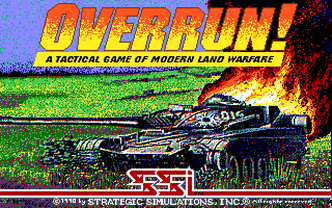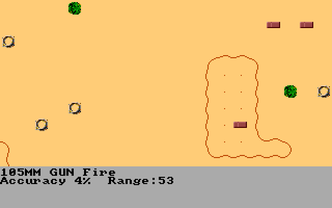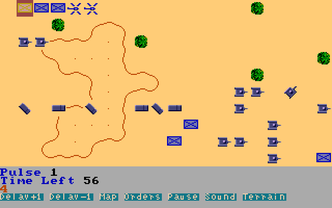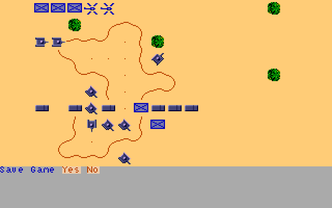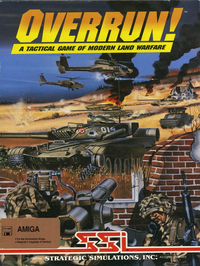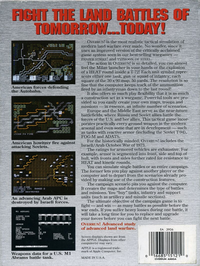Navigation:
Overrun! Amiga
Overrun! offers meticulous simulation of late twentieth-century squad-level action in European and Middle Eastern terrain. Players command a battalion of infantry, armor, artillery, and helicopters on behalf of Arab states, Iran, Israel, NATO, and the Warsaw Pact. The bulk of scenarios are speculative and near-future (including an Iranian invasion of Kuwait), but one historic war is presented, the 1973 Arab-Israeli "October War." A single-player campaign of randomly generated maps starts you with a core force which you will hopefully retain and expand with each victory.
SSI builds on its Panzer Strike engine with this release. Each unit has several static attributes, from size to morale, and a changing state based on orders and circumstance which determine its combat effectiveness from moment to moment. Weapons — and there are dozens — are carefully detailed with six characteristics of their own. Vehicle armor is distinguished by location, so facing plays an important role, too. The manual gives a thorough explanation of the mechanics, including formulas, plus a nineteen-page supplement of tables.
The currency of each turn is orders, gained and spent by each command unit. Without orders, your squads will only continue what they're doing or react to what is being done to them. If they lose their commanding superior, control goes to the computer. Orders are issued almost in real-time, because movement and actions occur in twenty-second (game-time) pulses and run continuously until a player interrupts the action to issue commands. This combination of a fragile chain of command and continuous play means that letting your eyes glaze over can turn the unexpected into total defeat.
The play screen is devoted to a small-scale map, fifty yards per square, with one level of outward zoom. A lot of scrolling is a necessity to judge the terrain, but a helpful line-of-sight tool removes some of the guesswork. Below the map is a menu of abbreviated commands and submenus, with a status line for the selected unit or terrain. Terrain factors are modified in-game with smoke, whether fired by units or resulting from burning vehicles and vegetation.
The scenarios can be played solitaire, hot-seat with two players, or entirely by the computer. A scenario editor gives complete control over map creation and initial forces, plus three different types of engagements, several objectives, and five levels of difficulty.
